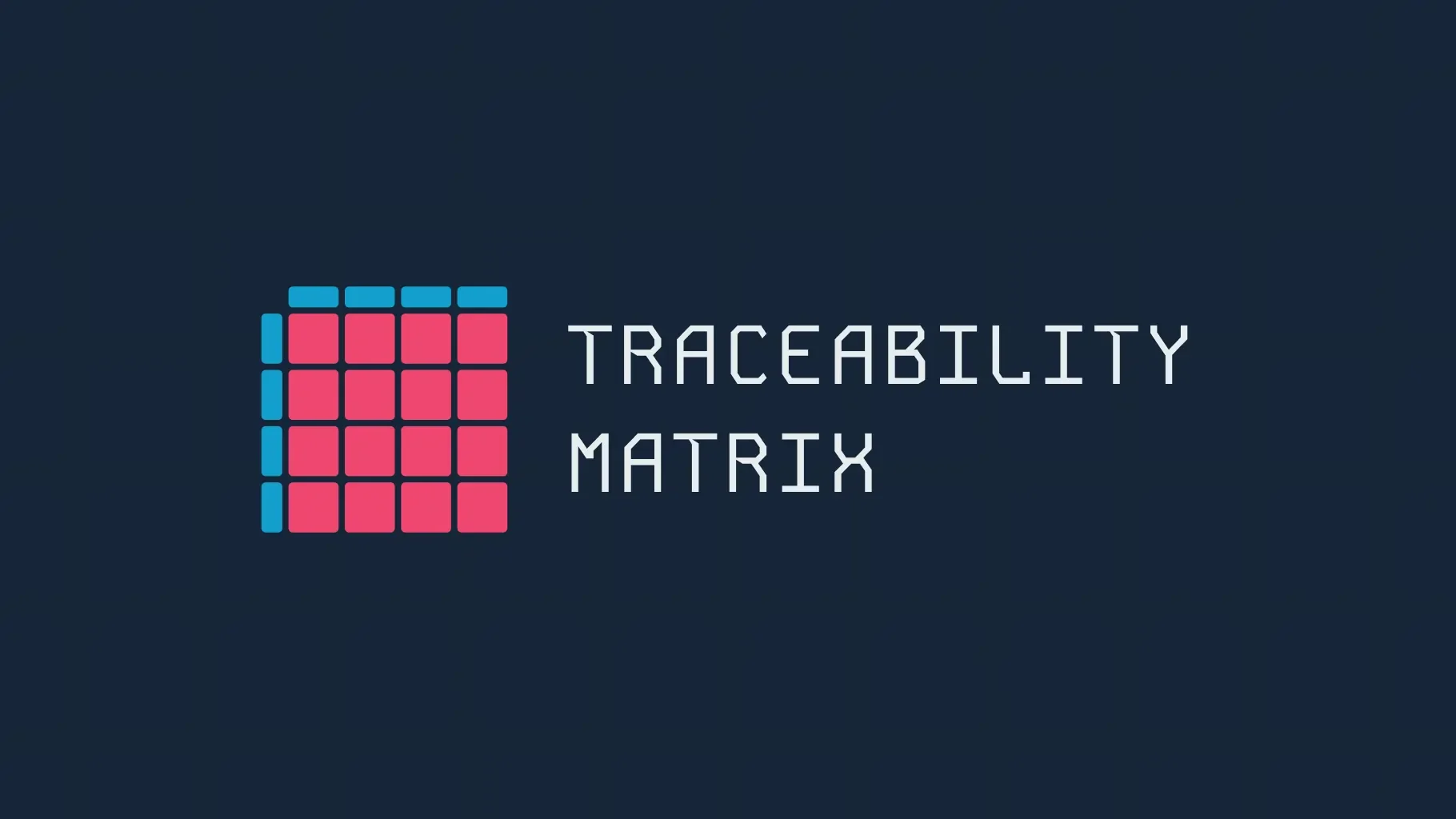Understanding Traceability Matrix in Software Testing
Introduction
A Traceability Matrix serves as a fundamental quality assurance document in software testing that maps relationships between two baseline documents - requirement specifications and test cases. Also known as the Requirements Traceability Matrix (RTM) or Cross Reference Matrix (CRM), it ensures comprehensive test coverage and maintains transparency throughout the software development lifecycle.

Get the Mobile Testing Playbook Used by 800+ QA Teams
Discover 50+ battle-tested strategies to catch critical bugs before production and ship 5-star apps faster.
Core Components and Structure

The traceability matrix connects two key documents: requirement specifications and test cases. This connection ensures every requirement is properly tested and verified. The matrix follows a clear structure where business requirements flow down to specific test cases, allowing teams to track both forward (from requirements to tests) and backward (from tests to requirements). This straightforward structure, shown in our diagram above, helps teams maintain clear oversight of their testing process while adapting to project changes. The result is a reliable system for tracking requirement implementation and verification.
Essential Parameters in a Traceability Matrix
A traceability matrix requires specific parameters to effectively track testing progress. These include requirement IDs to uniquely identify each feature, requirement version to track changes over time, clear descriptions of what needs to be tested, test case IDs that correspond to requirements, test case versions, current test status, and any defects found during testing. Additional parameters track different testing phases, from unit testing through user acceptance testing. These elements combine to provide a clear overview of testing coverage and progress, as demonstrated in our example table below. Each parameter serves as a checkpoint, ensuring that requirements are properly tested and verified throughout development.
Requirement ID | Req Version | Description | Test Case ID | TC Version | Test Status | Defects |
|---|---|---|---|---|---|---|
REQ_001 | 1.0 | User Authentication | TC_001, TC_002 | 1.0, 1.0 | Passed | None |
REQ_002 | 1.1 | Shopping Cart Management | TC_003, TC_004, TC_005 | 1.0, 1.0, 1.2 | In Progress | DEF_001 |
REQ_003 | 2.0 | Payment Processing | TC_006, TC_007 | 1.1, 1.1 | Failed | DEF_002, DEF_003 |
Types of Traceability Matrix
The traceability matrix can be implemented in three distinct ways, each serving specific purposes in the testing lifecycle:
Forward Traceability
Maps requirements to their corresponding test cases
Ensures systematic test coverage
Example: A login requirement (REQ_001) maps to test cases for valid login (TC_001) and invalid login attempts (TC_002)
Backward Traceability
Traces test cases back to their source requirements
Prevents scope creep and unnecessary testing
Example: Identifying that a complex password validation test case links back to specific security requirements
Bi-directional Traceability
Combines both forward and backward traceability
Provides complete requirement-to-test coverage
Enables impact analysis for requirement changes
Creating an Effective Traceability Matrix
Step 1: Define Business Requirements
BR_001: Secure User Authentication
BR_002: Account Transaction Management
BR_003: Bill Payment Services
Step 2: Break Down Functional Requirements
For BR_001 (Secure User Authentication):
FR_001: Multi-factor authentication
FR_002: Password policy enforcement
FR_003: Session management
Step 3: Develop Test Cases
For FR_001:
TC_001: Verify OTP delivery and validation
TC_002: Test biometric authentication
TC_003: Test failed authentication scenarios
Detailed Example
Business Req. | Functional Req. | Test Case ID | Status | Risk Level |
|---|---|---|---|---|
BR_001 | FR_001 | TC_001 | Passed | High |
FR_002 | TC_002 | In Progress | Medium | |
FR_003 | TC_003 | Not Started | High |
Best Practices for Implementation
Standardization
Maintain consistent naming conventions
Use standardized status indicators
Define clear requirement and test case hierarchies
Regular Maintenance
Update matrix with requirement changes
Track test execution progress
Document defects and their resolution
Version Control
Track requirement versions when specifications change
Update test case versions when test steps are modified
Maintain version history for audit purposes
Ensure alignment between requirement and test case versions
Stakeholder Communication
Share regular status updates
Highlight risk areas and coverage gaps
Facilitate impact analysis discussions
Benefits in the Software Development Cycle
Quality Assurance
Ensures complete requirement coverage
Validates test case effectiveness
Maintains testing accountability
Project Management
Facilitates progress tracking
Enables resource allocation
Supports risk assessment
Stakeholder Confidence
Demonstrates testing thoroughness
Provides transparency
Supports informed decision-making
Conclusion
A well-implemented traceability matrix serves as a crucial tool in software testing, providing structure, transparency, and accountability throughout the development lifecycle. By following the guidelines and examples presented here, teams can effectively implement and maintain their traceability matrices, leading to improved software quality and project success.





